Meridionalis tarantulas, with their striking appearance and relatively manageable care requirements, have become popular pets for arachnid enthusiasts. However, ensuring your tarantula thrives requires understanding its specific needs, particularly regarding feeding. Proper feeding is crucial not only for their growth and longevity but also for maintaining their overall health and well-being. This comprehensive guide will provide you with the knowledge to feed your Meridionalis tarantula effectively, ensuring it lives a long and healthy life.
Understanding Meridionalis Tarantula Feeding Needs
Understanding the dietary requirements of your Meridionalis tarantula is the first step in providing proper care. These fascinating creatures are obligate carnivores, meaning their diet consists solely of animal matter. Their feeding habits are primarily driven by instinct, with the tarantula’s sensory perception playing a crucial role in recognizing and capturing prey. They have specialized chelicerae (fangs) designed for injecting venom, which immobilizes their prey before they begin feeding. The tarantula then uses digestive enzymes to break down the prey, absorbing the nutrients needed for growth, molting, and overall vitality.
Natural Diet of Meridionalis Tarantulas
In their natural habitat, Meridionalis tarantulas are opportunistic hunters, their diet varying based on availability. Their diet typically consists of a variety of insects and other invertebrates they encounter in their environment. The specific prey items available influence their feeding habits. Replicating this natural diet as closely as possible is essential for providing a balanced diet in captivity.
Common Prey Items
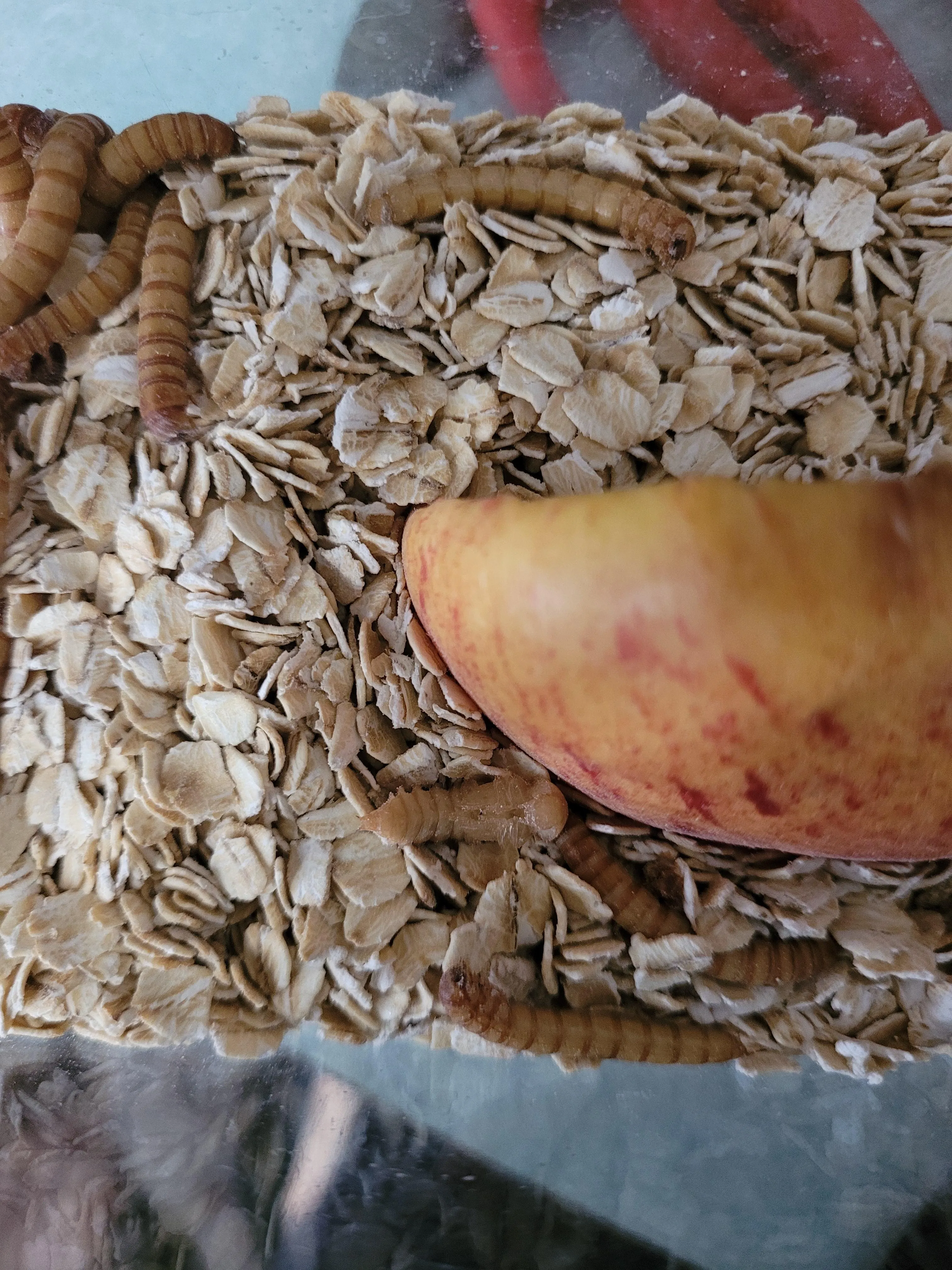
Common prey items for Meridionalis tarantulas in the wild include various insects such as crickets, grasshoppers, beetles, and moths. They may also consume other arthropods they can overpower, like smaller spiders. The size of the prey is critical; tarantulas will typically select prey items that are smaller than their body size. A varied diet is essential to ensure the tarantula receives a range of nutrients. The key is to offer a diverse menu to promote optimal health.
Importance of Variety
Providing a varied diet is crucial for a healthy tarantula. Just like humans, tarantulas benefit from the nutrients found in different food sources. Offering a range of prey, such as crickets, mealworms, roaches, and even the occasional waxworm as a treat, ensures the tarantula receives a balanced intake of essential vitamins and minerals. Regularly changing the prey items also helps prevent the tarantula from becoming bored with its diet. This variety contributes to their overall well-being, leading to vibrant coloration, and increased activity.
Creating the Perfect Feeding Schedule
Establishing a proper feeding schedule is vital to your Meridionalis tarantula’s health and overall well-being. The frequency of feeding depends on several factors, including the tarantula’s age, size, and stage of development. Overfeeding, like underfeeding, can be detrimental to the tarantula’s health. It’s also essential to observe your tarantula’s behavior to ensure they are getting the appropriate amount of food.
Determining Feeding Frequency
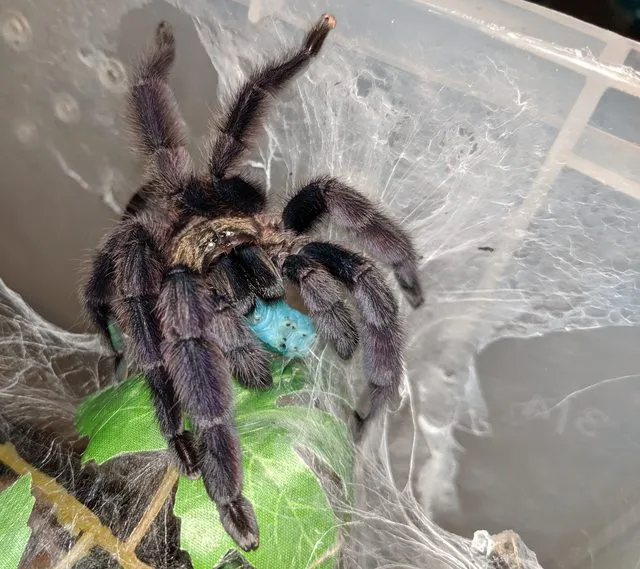
The feeding frequency for your Meridionalis tarantula will vary depending on its age and growth stage. Spiderlings, the youngest stage of the tarantula, require more frequent feedings, usually every other day or every three days. As they grow, you can gradually reduce the frequency. Juvenile tarantulas can be fed once or twice a week, while adult tarantulas typically need feeding every one to two weeks. Always observe your tarantula’s feeding habits, and adjust the schedule as needed.
Feeding Young Tarantulas
Spiderlings and juvenile tarantulas need a more frequent feeding schedule due to their rapid growth. These young tarantulas require regular access to food to support their development. Feeding them every other day, or every three days, is generally appropriate. The prey size for young tarantulas should be small and manageable, like pinhead crickets or small flightless fruit flies. Always offer food in a way that allows the tarantula to easily capture and consume it.
Feeding Adult Tarantulas
Adult Meridionalis tarantulas have slower metabolisms than their younger counterparts, requiring less frequent feeding. Feed adult tarantulas every one to two weeks, depending on their size and feeding response. At this stage, they can consume larger prey items like adult crickets or appropriately sized roaches. Overfeeding can lead to health problems, so it is crucial to monitor their body condition. A well-fed adult tarantula will have a plump abdomen, but should not appear overly distended.
Proper Feeding Techniques
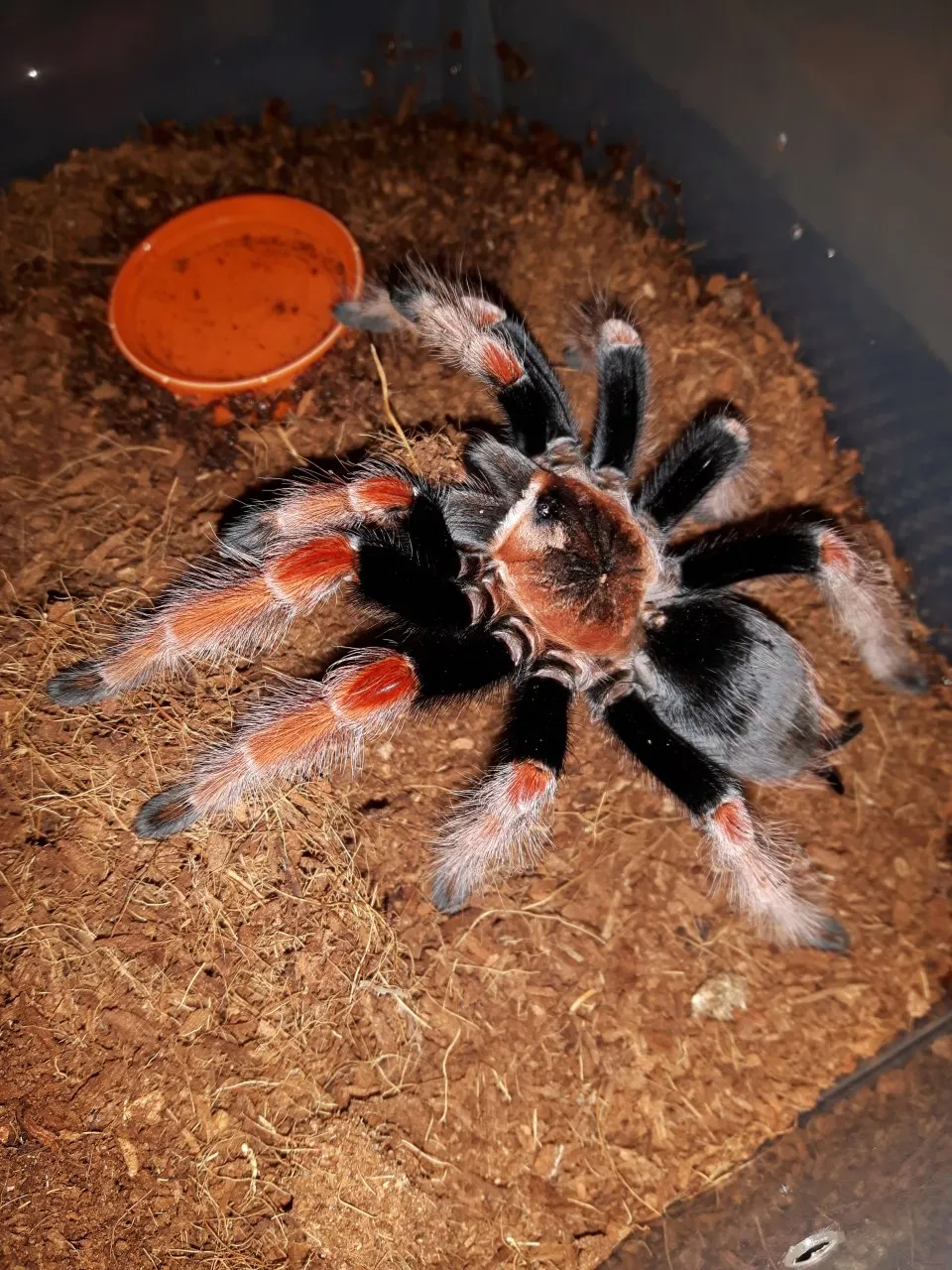
Using correct feeding techniques ensures your Meridionalis tarantula gets the appropriate nutrition safely. Providing food and maintaining a safe environment for feeding are crucial. The way you offer food can significantly impact your tarantula’s feeding habits, and your overall ability to monitor their health. Avoid disturbing the tarantula during feeding, and always maintain a clean environment.
Choosing the Right Prey Size
The size of the prey is essential for successful feeding. It should be no larger than the tarantula’s body size. Prey that is too large can be difficult for the tarantula to manage, while prey that is too small may not provide enough sustenance. The general rule is to offer prey items that are about the size of the tarantula’s abdomen or slightly smaller. Adjust prey size as your tarantula grows, but always ensure it can overpower the prey. This minimizes the risk of injury to the tarantula.
Offering Food Safely
When offering food, consider the tarantula’s safety. Avoid putting the prey directly into the tarantula’s burrow, as this can stress them and may lead to the prey escaping or hiding. Instead, use tongs to offer the prey near the tarantula. This allows them to hunt naturally. Live prey should be offered one at a time, so the tarantula can focus on the meal. This also helps to keep the enclosure cleaner and easier to manage.
Removing Uneaten Prey
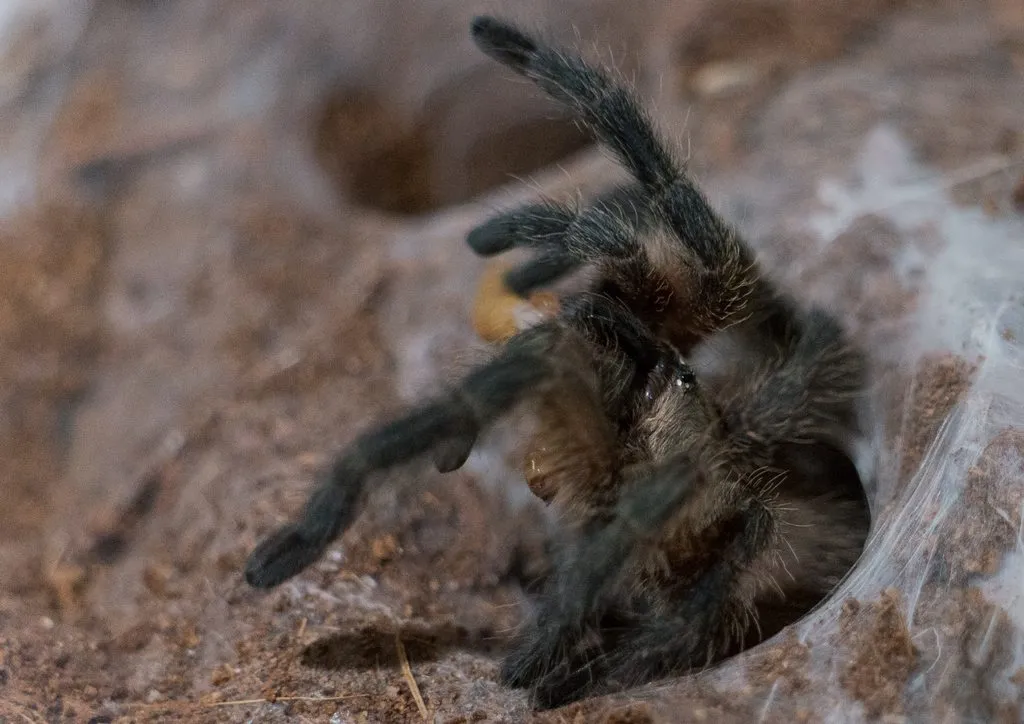
Uneaten prey should be removed within 24 hours of offering. Live prey can stress the tarantula and may even attack it during molting. Uneaten prey also degrades and contaminates the enclosure, promoting the growth of mold and bacteria. Removing uneaten prey helps keep the enclosure clean and minimizes health risks. A regular check of the enclosure is crucial to ensure there is no uneaten prey present.
Monitoring Your Tarantula’s Health
Closely observing your Meridionalis tarantula’s behavior can provide valuable insights into its health. Paying attention to its feeding habits, activity level, and overall appearance can alert you to potential issues. By monitoring their health regularly, you can address problems early on and ensure your tarantula thrives in its captive environment.
Signs of Overfeeding or Underfeeding
Overfeeding and underfeeding can affect your tarantula’s health. Overfed tarantulas may have a distended abdomen, while underfed ones may appear thin and lethargic. Watch for a lack of appetite, which can signal either overfeeding or illness. A tarantula that refuses to eat for an extended period, even after molting, may be sick or experiencing stress. Regular observation of your tarantula’s feeding behavior is essential for identifying potential problems early on.
Maintaining Optimal Hydration
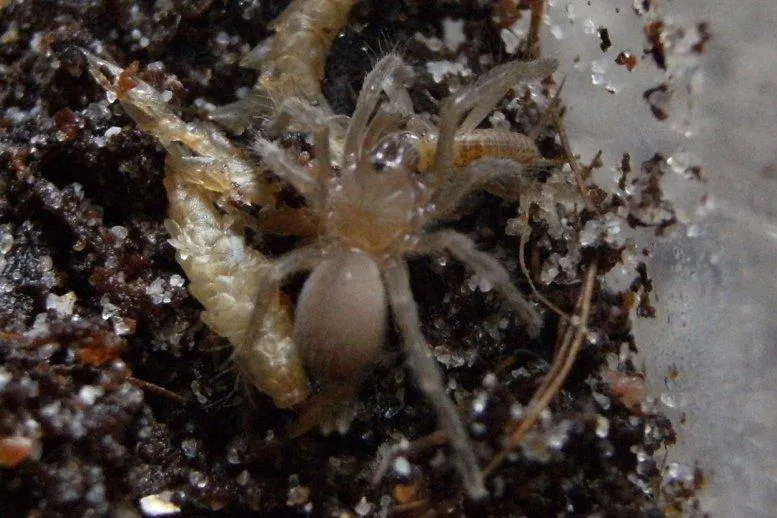
Maintaining appropriate hydration is crucial for your tarantula’s health, as it affects its ability to molt, digest food, and generally function. Provide a shallow water dish with fresh, clean water at all times. Ensure that the water dish is appropriately sized for the tarantula to avoid drowning. A water dish is essential for the tarantula to stay hydrated. Additionally, misting the enclosure occasionally can increase humidity levels, which is beneficial during molting.
Troubleshooting Common Feeding Issues
Even with careful planning, you may encounter some feeding issues with your Meridionalis tarantula. Understanding these problems and knowing how to address them can help you resolve them quickly and ensure your tarantula’s well-being. There are several strategies you can employ if you encounter common problems while feeding your tarantula, but if the problem persists, seeking help from a veterinarian is the best course of action.
If your tarantula refuses to eat, check the temperature and humidity levels in its enclosure. The ideal temperature range is between 75-85°F (24-29°C), and the humidity should be around 60-70%. Ensure it’s not approaching a molt, as tarantulas often stop eating before molting. If the tarantula still refuses to eat, offer a different type of prey or reduce the feeding frequency. Always inspect your tarantula for any signs of illness or injury.
Providing the best possible care for your Meridionalis tarantula requires careful attention to its feeding needs. Following the guidelines provided here will help ensure your tarantula receives a balanced diet, a healthy environment, and ultimately, a long and happy life. Remember to observe your tarantula regularly, adapt your feeding practices as needed, and seek advice from an experienced tarantula keeper or veterinarian if you have concerns.
